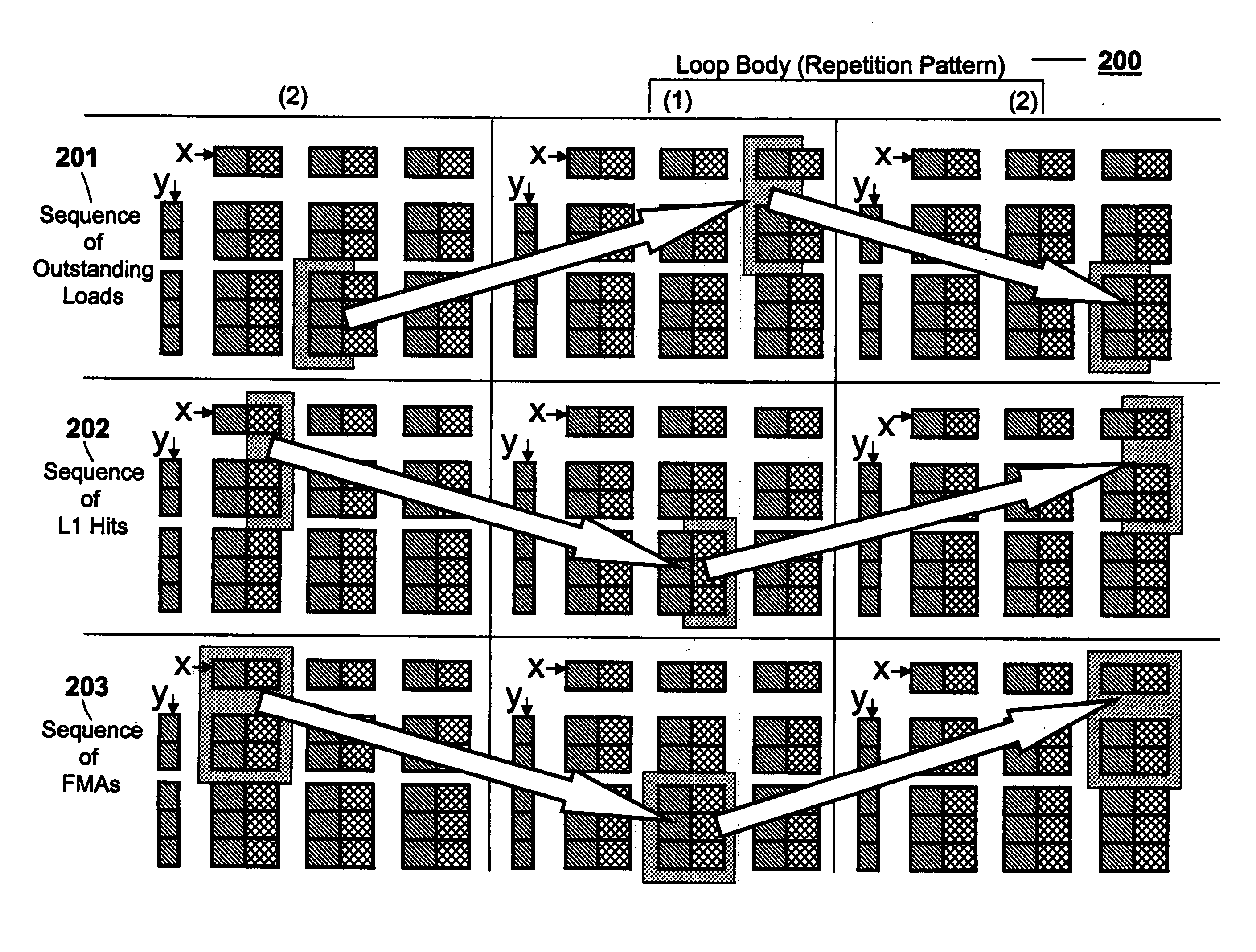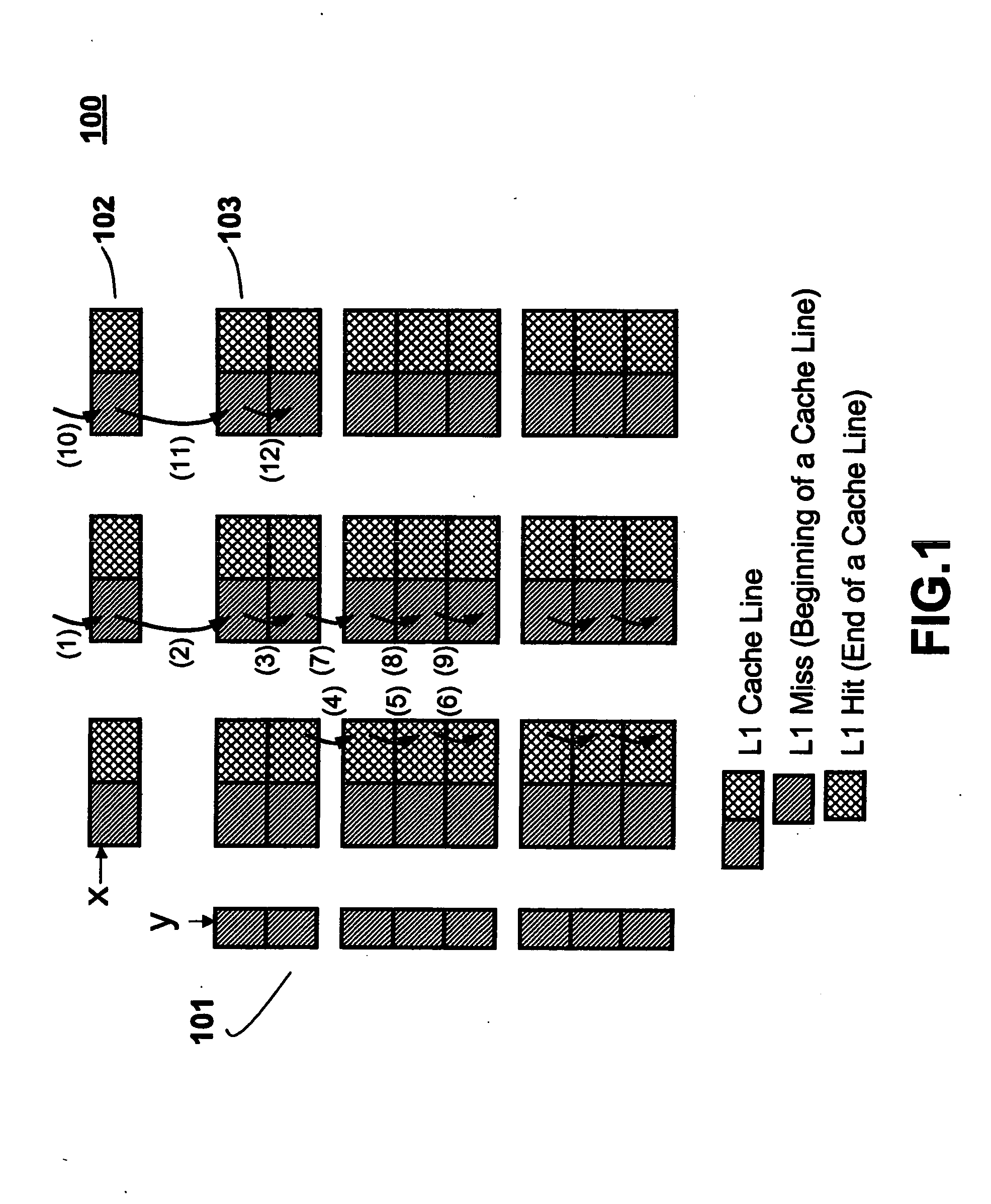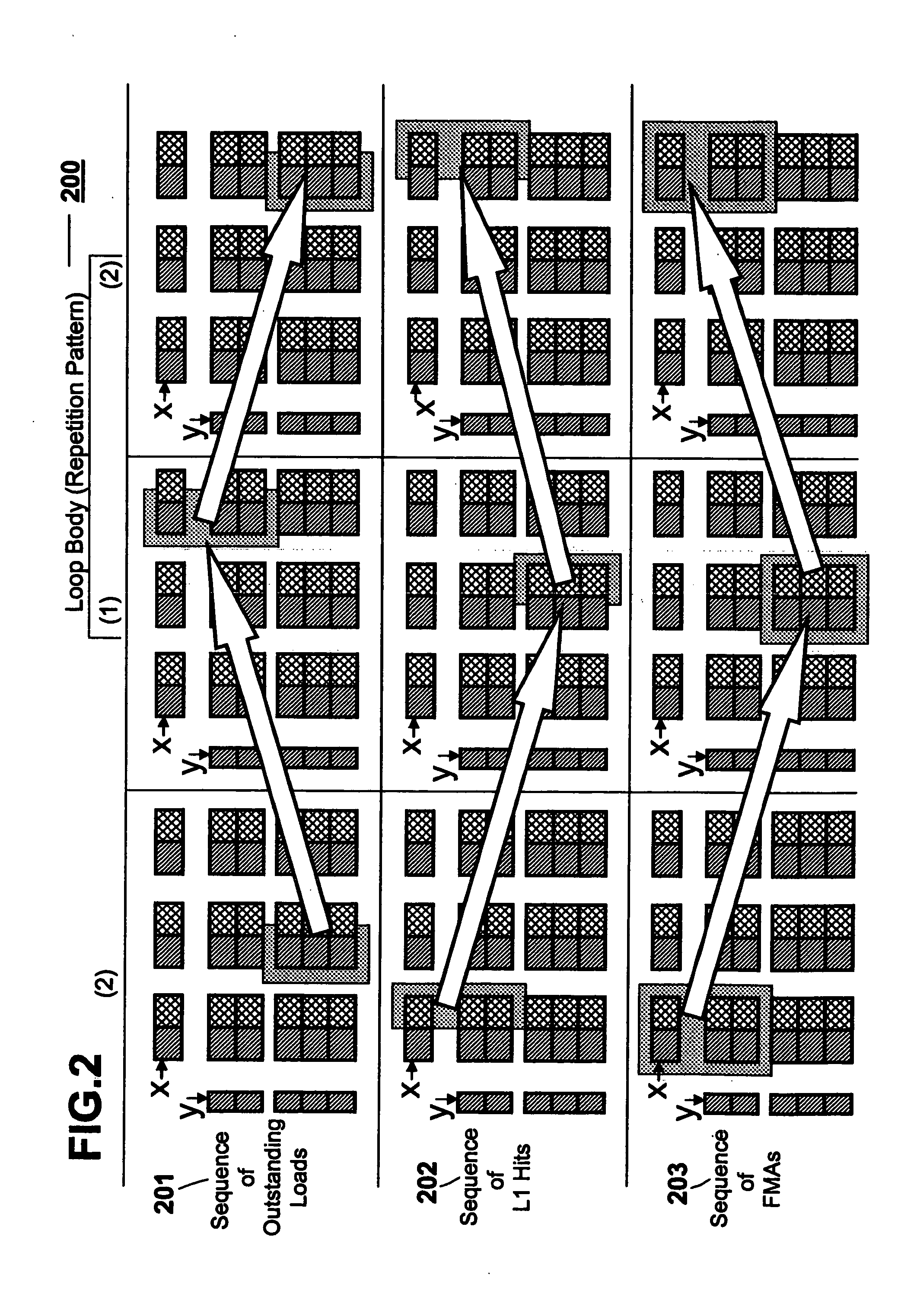Method and structure for high-performance linear algebra in the presence of limited outstanding miss slots
a linear algebra and outstanding miss technology, applied in the field of improving efficiency in computer calculations, can solve problems such as performance degradation due to stalls, and achieve the effect of high efficiency and little extra memory
- Summary
- Abstract
- Description
- Claims
- Application Information
AI Technical Summary
Benefits of technology
Problems solved by technology
Method used
Image
Examples
Embodiment Construction
[0025] Referring now to the drawings, and more particularly to FIGS. 1-5, an exemplary embodiment of the method and structures according to the present invention will now be described.
[0026] The present invention was discovered as part of the development program of the Assignee's Blue Gene / L™ (BG / L) computer in the context of linear algebra processing. However, it is noted that there is no intention to confine the present invention to either the BG / L environment or to the environment of processing linear algebra subroutines.
[0027] Before presenting the exemplary details of the present invention, the following general discussion provides a background of linear algebra subroutines and computer architecture, as related to the terminology used herein, for a better understanding of the present invention.
Linear Algebra Subroutines
[0028] The explanation of the present invention includes reference to the computing standard called LAPACK (Linear Algebra PACKage). Information on LAPACK i...
PUM
 Login to View More
Login to View More Abstract
Description
Claims
Application Information
 Login to View More
Login to View More - R&D
- Intellectual Property
- Life Sciences
- Materials
- Tech Scout
- Unparalleled Data Quality
- Higher Quality Content
- 60% Fewer Hallucinations
Browse by: Latest US Patents, China's latest patents, Technical Efficacy Thesaurus, Application Domain, Technology Topic, Popular Technical Reports.
© 2025 PatSnap. All rights reserved.Legal|Privacy policy|Modern Slavery Act Transparency Statement|Sitemap|About US| Contact US: help@patsnap.com



